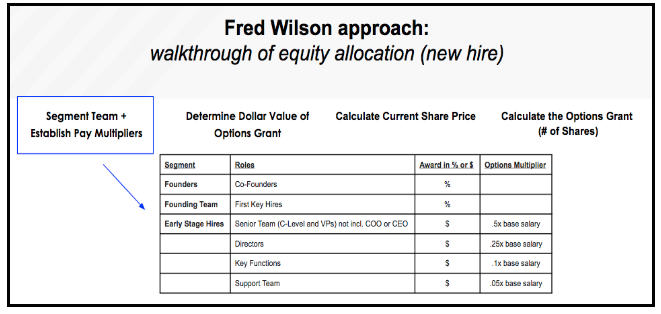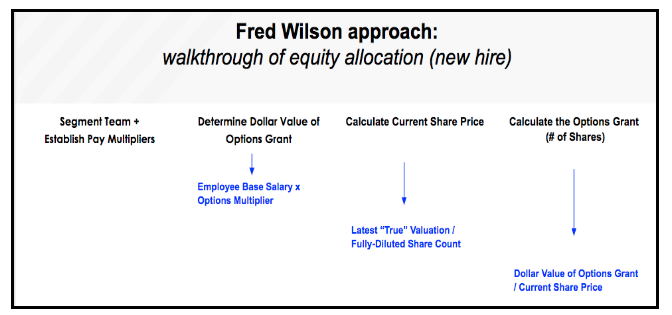When I first started my career in tech, I’d hear the classic stories of employees “striking it rich” after a successful IPO or exit — and a few also experiencing this more than once! It’s a great win for everyone involved. Obviously, some of them may have joined at an earlier stage and perhaps taken on more risk, but all that hard work finally paid off (no pun intended). However, unfortunately not all exits have a happy ending, as in the case of some high profile exits such as the Skype acquisition by Microsoft, where employees were left with virtually nothing due to clauses in their stock option agreements.
Nowadays, I work closely with early-stage founders and CEOs who are just beginning their journey. They often reflect about how best to incentivize current employees and attract new ones — and of course establishing a stock option plan for employees is usually at the top of their list.
It’s important that appropriate measures should be put in place to ensure the best possible outcome for all upon a successful exit or IPO. Outlined below are some insights and considerations as you begin to build a stock option plan for your employees.
Why should you consider an employee stock option plan?
Drawing new talent in a competitive startup environment is challenging, to say the least. Recruits, especially for hard to fill roles, are presented with compelling opportunities, an endless array of perks and benefits, and a work environment that makes them feel great when they walk through the office doors every day.
Where startups sometimes fall short is on providing higher levels of compensation (i.e., paying salaries above market). Granted, there are exceptions, but for various factors including cash flow management, joining a startup may result in some new hires experiencing little to no change in their salaries or even possibly taking pay cuts.
To address this challenge, most startups provide employees with stock options, especially at the early stages when there is higher risk and limited funding. This not only incentivizes employees, but helps companies retain talent, as these employees would have a vested interest in the success of the company in the long term.
Setting up an employee stock option plan
Disclaimer — I’ve sourced and summarized multiple insights and perspectives on methods of building out a plan. This is a snapshot and provides preliminary guidance on key considerations, though not all related topics have been discussed (e.g., potential tax implications). Please consult your legal and/or financial advisors if you’re looking to implement a plan at your company.
There’s a fine balance between business transparency and confidentiality.
There are many factors to consider when setting up an employee stock option plan. These include determining your current valuation, hiring plan, equity pools, and vesting schedules. I’ll provide an overview of some of these topics below, however, you can review an awesome framework developed by Gusto on detailed steps for building out your equity strategy. Download their guide here and refer to the section on “Building your Equity Strategy” for more details.
Common stock and valuations
Companies can choose to use existing models or deploy their own approaches when issuing grants. Common stock options are typically allocated for employees, while preferred stock is usually reserved for investors. There are two methods of granting rights to common stock to employees, either through stock options or restricted stock units. Both methods incentivize employees differently and also have varying tax implications, as outlined in a Wealthfront blog here.
Before proceeding, you may need to ensure that a current valuation of the company has been determined in order to set the strike price. Scalar and eShares, among others, provide valuation services for companies. If you’d like more insight into how to conduct a valuation process, let us know and we’ll help point you in the right direction.
Hiring plans, equity pools, and dilution
If you’re in the early stages of building your company, it’s a great time to develop your team structure and hiring plan, including key hires over the next one to two years. It’s important to think about the medium to long term when creating your option pool; that is planning beyond new hire allocations. Gusto’s framework offers three critical questions to ask yourself:
- How many people do we want to hire? The size of your option pool will be dependant on the number of hires.
- What type of hires will I be making? If a majority of your new hires will be at the executive/senior level, or if you’re looking to build out your product/engineering teams, then the size of your option pool will be larger.
- When is your next financing round? This is an important consideration as there will be new share issuances and your option pool will be diluted.
The Wealthfront Equity Plan indicates a 3.5 percent to five percent annual dilution, with the assumption that no additional executives need to be hired. Fred Wilson at Union Square Ventures has also shared his views and devised a calculation on a typical dilution path for founders and employees; I’ve included the link to his blog on the topic here.
Grants and grant periods
The key is to have a consistent, fair, and transparent process for grant issuances. Stock options may be extended during initial hire, promotions, performance, and for refreshes. Performance grants are usually reserved for the top 10 to 20 percent of performers (non-executives). Refresh grants are key to retaining top talent. It is especially important that they are considered and discussed with employees before their initial shares are fully vested (i.e., on a four-year vesting schedule), as some employees may consider new opportunities elsewhere if there no longer is an incentive to stay.
Vesting and cliffs
Your views and actions on your stock option plan will likely impact the culture you wish to establish and reinforce within your company.
Standard or non-traditional option schedules can be designed according to company strategies and objectives for recruiting and retaining talent. Vesting is essentially the period of time it takes for employees to earn their stock options and a typical vesting schedule consists of a four-year period with a one-year cliff. This means that an employee will not be able to earn any options until they’ve been with a company for at least one year. At the one-year mark, employees earn one-quarter of their options and the remaining vest on a straight line monthly basis over the following 36 months.
Industry models
There are many approaches employers can utilize when implementing a stock option plan. I’ve chosen to highlight a select few industry models which you can consider when building your equity strategy.
The Wealthfront Equity Plan was developed by Andy Rachleff (former Partner at Benchmark Capital), and focuses on a comprehensive, continuous reward system. I’ve summarized the plan below, highlighting grant structures for the following categories: new hires, promotions, performance and evergreen (refreshers), but you can refer to the Wealthfront slideshare for more details.
| New Hires | Grants for new hires are based on market compensation for different roles, levels, and locations. Companies such as Advanced HR and PayScale can help you with your benchmarking efforts. |
| Promotions | Reward promoted employees by offering them stock options which should bring them to the level as if they were hired for the new position today. |
| Performance | Intended for exceptional 10 to 20 percent of performers (non-executive). Grant should be 50 percent of what a new hire would receive in the same role today. |
| Evergreen (Refresh) | Equity awarded to talent at their 2.5 year anniversary and every year after — a key strategy to facilitate employee retention. This entails an annual grant equivalent to 25 percent of what the employee would receive if hired in the same role today. It’s intended to smooth out the vesting process and avoids cliffs. |
Another approach specifically for equity refreshes is using the “boxcar method.” Essentially, grants start at an employee’s 2.5 or 3 year anniversary and should equal 25 percent of what an employee would receive if hired in the same position today. The options vest monthly over a one-year period starting in Year 5. This is then repeated on an annual basis.
The boxcar approach avoids the large dropoff in shares between year four and year five (after initial grants have vested), which otherwise would disincentivize employees and counter retention efforts in year five. It also grants employees shares at an earlier time period, and likely a lower strike price which provides them with a higher equity value over time.
Fred Wilson of Union Square Ventures has established his own approach, which incorporates employee salaries, levels, and company valuation to determine the number of grants that should be awarded. The intent is to reward employees but also minimize dilution. I’ve summarized his model below, which elaborates on new hire and retention grants.
New hires
The model calculates new hire stock allocation grants by applying a multiplier to the individual’s salary in order to determine the total dollar value of equity to be provided. This number is then divided by the current share price to determine total number of shares granted.
Source: Employee Equity – How Much?
Source: Accion Venture Lab Best Practices
Retention
To enable talent retention, the approach proposes allocating new grants every two years commencing two years after the initial grant. The approach applies the same formula for new hires, with the exception of halving the total shares granted.
Source: Employee Equity – How Much?
Communicating your employee stock option plan
Now that you’ve got a solid plan in place, communicating it is just as important as creating it. Employees would benefit from knowing important aspects of the plan, including the most recent valuation, price at which the shares were last sold, new investors, the size of the last round, and the total capital raised. Generally, the number of outstanding shares, price of preferred stock, and percentage of the company being granted are less commonly shared due to the sensitivity of this information. However, some companies may still choose to disclose it.
There’s a fine balance between business transparency and confidentiality. Ultimately, your executive team and board will need to have a conversation on how transparent to be with employees, but should keep in mind that transparency is a key driver to ensure employees are engaged and committed to the long-term success of the company. Though there are multiple ways to motivate and retain talent, your views and actions on your stock option plan will likely impact the culture you wish to establish and reinforce within your company.




